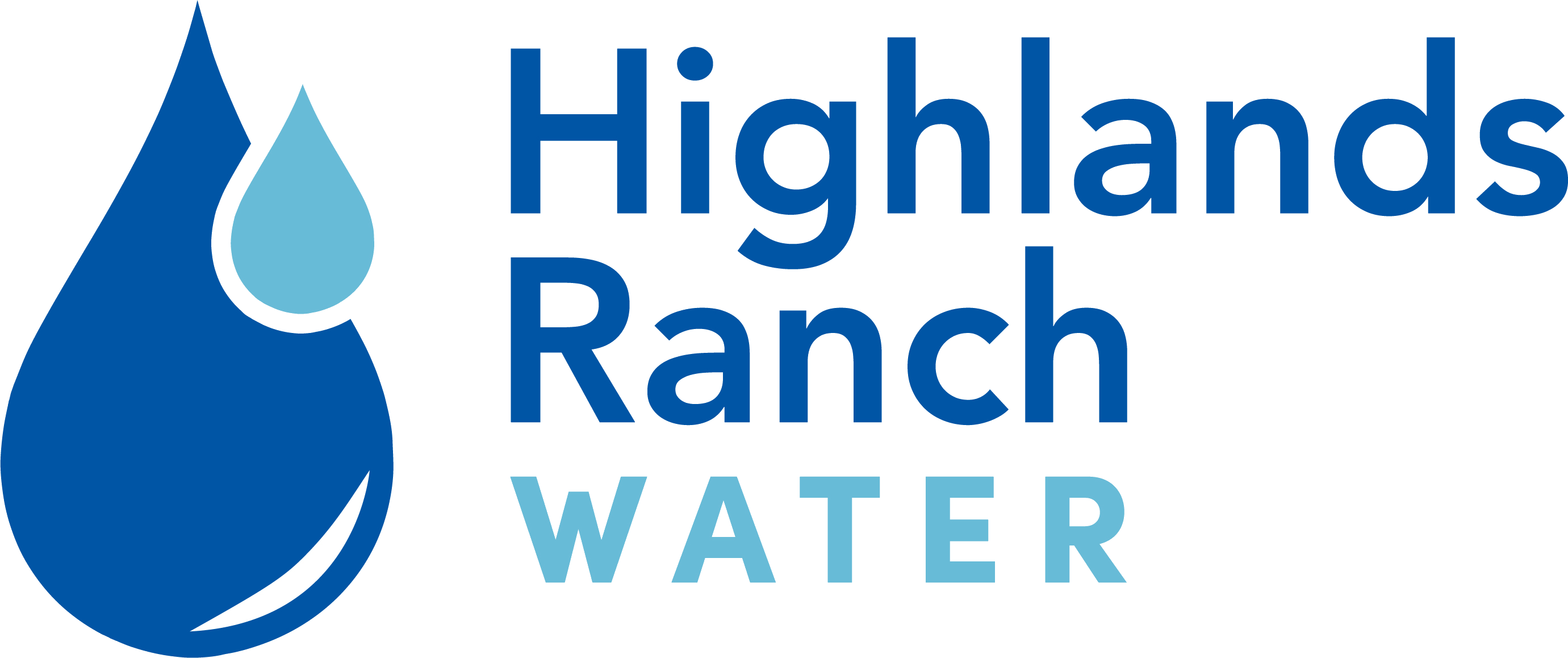Water Treatment
Drinking water is treated by Highlands Ranch Water staff to ensure customers have safe and sufficient water. Highlands Ranch Water uses a conventional treatment process consisting of the following unit processes:
- Coagulation
- Flocculation
- Clarification
- Filtration
- Disinfection by chloramination
Every year, Highlands Ranch Water publishes a Water Quality Report. This report is designed to inform you about the quality water and services we deliver to you every day. Our goal is to provide you with a safe and dependable supply of drinking water. We want you to understand the efforts we make to continually improve the water treatment process and protect our water resources.
Download a copy of the 2021 Water Quality Report or view it below.
Chloramination is a method of disinfection that combines chlorine with ammonia in a carefully controlled ratio to form a disinfectant called chloramine. Chloramine is less reactive than chlorine, but still provides protection against bacteria in drinking water. Chloramination has been used by water utilities in the United States since the early 1900s.
Chloramine is less reactive than chlorine, and as a result, it does not form byproducts as readily. Trihalomethanes (THM) production is significantly reduced when water is disinfected with chloramine, as compared to chlorine. This will result in THM levels safely below the Environmental Protection Agency (EPA) established maximum. The less reactive nature of chloramine also makes it more persistent in the distribution system, allowing disinfectant to reach and maintain disinfection to remote areas of the system.
Chloramine is more persistent than chlorine. Chloramine cannot effectively be removed by letting the water stand or by boiling. Similar to chlorine, chloramines will not be removed by water softeners or by filters not specifically designed to remove them. Although it is not necessary to remove chloramines from drinking water from most household uses including drinking, cooking and bathing, chloramines can be removed fairly effectively using a properly maintained granular activated carbon (GAC) filter, followed by reverse osmosis (RO). This method may not be adequate for patients receiving kidney dialysis, or for water to be used in aquariums.
The effect of chloraminated water on plants is no different than the effect of chlorinated water. Chloramine, like chlorine, is typically neutralized by chlorine demand in the soil. Chloraminated water can safely be used to water all types of plants including house plants, lawns, trees, shrubs, flowers and garden vegetables. Customers who practice aquaculture (growing plants in tanks or ponds) should seek advice from the plant supplier regarding the use of chloraminated water.
Chloraminated water is safe for animals that do not live in water because their digestive systems will neutralize chloramine before it enters the bloodstream. Chloraminated water is not safe for fish, reptiles and amphibians.
Chloramine, like chlorine, is toxic to both fresh and salt water fish and to other aquatic animals. Chloramines are toxic to fish because they take the chloramine directly from the water into their blood stream through their gills. Chloramine must be removed from any water that will be used with aquatic animals including fish, lobsters, shrimp, snails, clams, frogs, turtles, etc.
Chloramine is more persistent than chlorine, and special care must be taken to ensure it is completely removed. Products specifically designed to remove chloramines are available at pet stores and other retail outlets. If you are already using a product to remove chlorine, it may also remove chloramine, however, you must read the label to be sure. Products not specifically designed to remove chloramine may leave ammonia in the water, which can also be toxic to aquatic animals.
Chloramines are not harmful to pipes, but in some cases they can accelerate the aging of natural rubber products such as hoses, toilet flap valves and gaskets. When the time comes to replace these parts, doing so with properly formulated synthetic materials can eliminate this problem.
Chloraminated water is safe for all normal household uses including drinking, cooking and bathing. When chloraminated water is consumed, monochloramine, the most common form of chloramine in chloraminated drinking water, is broken down quickly and eliminated through the urine. There is no evidence that chloramines accumulate in the body and there is no evidence that chloramines absorb through the skin. The primary health implication for both chlorinated and chloraminated drinking water is that chlorine forms byproducts when it comes in contact with trace amounts of naturally occurring organic material in the source water. These byproducts, called THMs, are a contaminant regulated by the EPA. Formation of THMs is dramatically reduced by the use of chloramination instead of chlorination. That is, in fact, the primary reason for this change. People with weakened immune systems, including those undergoing chemotherapy and persons with HIV/AIDs should consult a health care professional about using specially treated water instead of water from any normal public source.
Yes, chloraminated water is safe for consumption by all people, including infants, children and pregnant women.
Chloramines like chlorine are harmful if they directly enter the bloodstream. In the dialysis process, water comes into contact with blood across a permeable membrane. Chloramines in dialysis water would be toxic, and therefore must be removed from water used in kidney dialysis machines. Dialysis centers are responsible for purifying water that enters their dialysis machines. Customers with home dialysis equipment must contact their physicians or dialysis centers regarding chloramination and ask how it will affect them. Chloramines must be removed from any water that will be used in the dialysis process. Dialysis patients can also contact the manufacturer of their dialysis equipment for information.
